Flexor Carpi Ulnaris Muscle
Table of Contents
Description
The flexor carpi ulnaris muscle (FCU) is a muscle located in the forearm that helps in the movement of the wrist and hand. It is one of the muscles that are responsible for flexing the wrist and adducting the hand towards the ulnar side of the forearm (the side where the little finger is located).
- The FCU muscle originates from two heads, the humeral head, which arises from the medial epicondyle of the humerus, and the ulnar head, which arises from the olecranon and the posterior border of the ulna bone.
- The two heads merge to form a single muscle belly that runs down the forearm and attaches to the pisiform bone and the hamate bone of the wrist.
- The FCU muscle is innervated by the ulnar nerve (C8-T1), and its blood supply is primarily from the ulnar artery.
- The FCU muscle plays an essential role in stabilizing the wrist during gripping and lifting movements and also helps in movements that require adduction of the hand towards the ulnar side.
- Injuries or strains to this muscle can result in pain, weakness, and limited mobility of the wrist and hand.
Structure of flexor carpi ulnaris
The Flexor Carpi Ulnaris (FCU) muscle is a long, slender muscle that is located on the ulnar side of the forearm. It has two heads of origin, the humeral head, and the ulnar head.
The Humeral Head:
This head arises from the medial epicondyle of the humerus bone, which is a bony bump located on the inner side of the elbow joint.
The Ulnar Head:
This head arises from the posterior border of the ulna bone, which is one of the two long bones of the forearm. It also arises from the olecranon, which is the bony prominence at the back of the elbow.
- The two heads of the FCU muscle unite to form a long tendon, which runs down the forearm and passes through a groove in the wrist, known as the ulnar groove.
- The tendon then inserts into the pisiform bone and the hamate bone of the wrist.
- The FCU muscle is innervated by the ulnar nerve, which is one of the major nerves of the forearm.
- It receives blood supply from the ulnar artery, which is a branch of the brachial artery.
- The FCU muscle plays an important role in the movement of the wrist and hand.
- It is primarily responsible for flexing the wrist and adducting the hand towards the ulnar side of the forearm.
- It also helps in stabilizing the wrist during gripping and lifting movements.
Origin and insertion of flexor carpi ulnaris muscle
The Flexor Carpi Ulnaris (FCU) muscle has two heads of origin and inserts into two bones in the wrist.
The origin of the FCU muscle is from two heads:
Humeral head:
It originates from the medial epicondyle of the humerus bone, which is a bony projection located on the inner side of the elbow joint.
Ulnar head:
It originates from the posterior border of the ulna bone, which is one of the two long bones of the forearm. The ulnar head also arises from the olecranon, which is the bony prominence at the back of the elbow.
The two heads of the FCU muscle unite to form a tendon, which runs down the forearm, alongside the ulna bone.
The insertion of the FCU muscle is into the wrist bones, specifically:
Pisiform bone:
It is a small, pea-shaped bone located on the anterior surface of the wrist.
Hamate bone:
- It is a wedge-shaped bone located on the medial side of the wrist, near the base of the hand.
- The FCU muscle’s tendon inserts into these two bones, helping to flex the wrist joint and adduct the hand towards the ulnar side of the forearm.
- The FCU muscle’s actions are important in activities that require wrist flexion, such as gripping objects, throwing a ball, and typing on a keyboard.
Nerve supply and arterial supply
- The Flexor Carpi Ulnaris (FCU) muscle is innervated by the ulnar nerve, which is a major nerve of the forearm.
- The ulnar nerve arises from the brachial plexus, which is a network of nerves that originates from the spinal cord and provides innervation to the upper limb.
- The ulnar nerve courses down the arm and into the forearm, passing behind the medial epicondyle of the humerus bone, where it gives off a branch that supplies the FCU muscle.
- The arterial supply of the FCU muscle is primarily from the ulnar artery, which is a branch of the brachial artery.
- The ulnar artery runs down the forearm alongside the ulnar bone, and it gives off several branches, including the anterior ulnar recurrent artery and the posterior ulnar recurrent artery, which supply the FCU muscle and other structures in the forearm.
Additionally, the ulnar artery forms an anastomosis with the radial artery, which is another major artery of the forearm, providing collateral blood supply to the FCU muscle and surrounding tissues.
Functions of flexor carpi ulnaris muscle
The Flexor Carpi Ulnaris (FCU) muscle has several functions in the wrist and hand, including:
Wrist flexion:
- The FCU muscle is a powerful flexor of the wrist joint.
- It works in conjunction with other muscles, such as the Flexor Carpi Radialis (FCR) and the Palmaris Longus, to produce flexion of the wrist.
Ulnar deviation:
- The FCU muscle is the primary muscle responsible for adduction or ulnar deviation of the wrist, which is the movement of the hand towards the little finger side of the forearm.
Grip strength:
- The FCU muscle contributes to grip strength by helping to stabilize the wrist during gripping activities, such as lifting weights, carrying objects, or using tools.
Forearm stabilization:
- The FCU muscle also plays a role in stabilizing the forearm during activities that require forceful contractions of the wrist or hand, such as throwing a ball or punching.
Overall, the FCU muscle is an important muscle for wrist and hand movements and contributes to many everyday activities, including grasping, lifting, and manipulating objects. In addition, the muscle helps to maintain the stability of the wrist joint and contributes to overall forearm strength and control.
Associated conditions
The Flexor Carpi Ulnaris (FCU) muscle can be associated with several conditions, including:
Tendinitis:
- Tendinitis of the FCU muscle can occur due to overuse or repetitive strain injuries.
- This can cause pain and inflammation in the muscle, tendon, or surrounding structures.
Cubital Tunnel Syndrome:
- The ulnar nerve, which supplies the FCU muscle, passes through a narrow tunnel of tissue in the elbow known as the cubital tunnel.
- Compression of this nerve within the cubital tunnel can cause symptoms such as pain, numbness, and weakness in the hand and forearm.
Ulnar collateral ligament injury:
- The FCU muscle plays a role in stabilizing the elbow joint, particularly during throwing or other overhead activities.
- Injuries to the ulnar collateral ligament, which connects the humerus to the ulna bone and helps to stabilize the elbow joint, can cause pain and weakness in the FCU muscle.
Fractures and dislocations:
- Fractures or dislocations of the elbow, wrist, or hand can affect the FCU muscle and its function, causing pain, weakness, and loss of range of motion.
Repetitive strain injuries:
- Activities that involve repetitive motions of the wrist and hand, such as typing, can cause strain and overuse injuries to the FCU muscle, leading to pain and dysfunction.
Treatment for FCU-related conditions may include rest, physical therapy, medications, or surgery, depending on the severity of the condition and the underlying cause.
Diagnosis
A diagnosis of the flexor carpi ulnaris muscle can be made by a healthcare professional, such as a doctor or physical therapist, through a physical examination and possibly imaging tests. The following are some steps that may be involved in the diagnosis of a flexor carpi ulnaris muscle injury or condition:
Medical history:
- The healthcare professional will ask about any symptoms you may be experiencing, such as pain, weakness, or tingling in the wrist or forearm.
Physical examination:
- The healthcare professional will examine the affected area, looking for signs of swelling, tenderness, or bruising.
- They may also test your range of motion and strength in your wrist and hand.
Imaging tests:
- If necessary, imaging tests such as an X-ray, ultrasound, or MRI may be ordered to help diagnose the problem and rule out other conditions.
Electromyography (EMG):
- In some cases, an EMG test may be ordered to evaluate the electrical activity in the muscles and nerves.
Some common conditions affecting the flexor carpi ulnaris muscle include strains or tears, tendinitis, and ulnar wrist pain. Treatment will depend on the specific condition and severity of the injury but may include rest, ice, compression, and physical therapy exercises to strengthen and stretch the muscle. In more severe cases, surgery may be required.
Treatment
The treatment of Flexor Carpi Ulnaris (FCU) muscle-related conditions depends on the specific condition and the severity of symptoms. Some common treatments include:
Rest and immobilization:
- In cases of FCU tendinitis, cubital tunnel syndrome, or other conditions caused by overuse or repetitive strain, rest and immobilization of the affected area may be necessary to allow the muscle and associated structures to heal.
Physical therapy:
- Physical therapy can help to strengthen the FCU muscle and improve the range of motion in the wrist and hand.
- A physical therapist may also use techniques such as massage, stretching, and joint mobilization to help reduce pain and improve function.
Medications:
- Nonsteroidal anti-inflammatory drugs (NSAIDs) or corticosteroids may be prescribed to help reduce inflammation and pain associated with FCU-related conditions.
Surgery:
- In cases where conservative treatments are not effective, surgery may be necessary to address underlying issues such as nerve compression, ligament injuries, or fractures.
Ergonomic adjustments:
- In cases of repetitive strain injuries, making ergonomic adjustments to workstations or equipment may help to prevent further injury and alleviate symptoms.
It is important to consult with a healthcare professional for an accurate diagnosis and appropriate treatment plan for FCU-related conditions, as each case is unique and requires individualized care.
Physiotherapy exercise
Here are some physiotherapy exercises that can help strengthen and improve the flexibility of the Flexor Carpi Ulnaris (FCU) muscle:
Wrist curls:

- Hold a lightweight, such as a dumbbell or a can of soup, in your hand with your palm facing up.
- Rest your forearm on a table or bench with your hand hanging off the edge, and slowly curl your wrist up and down.
- Repeat for 10-15 repetitions for 2-3 sets.
Reverse wrist curls:
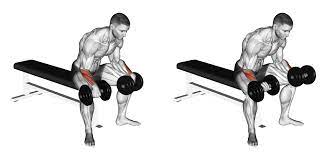
- Take a weight in your hand with your palm facing down.
- Rest your forearm on a table or bench with your hand hanging off the edge, and slowly curl your wrist up and down.
- Repeat for 10-15 repetitions for 2-3 sets.
Ulnar deviation stretch:
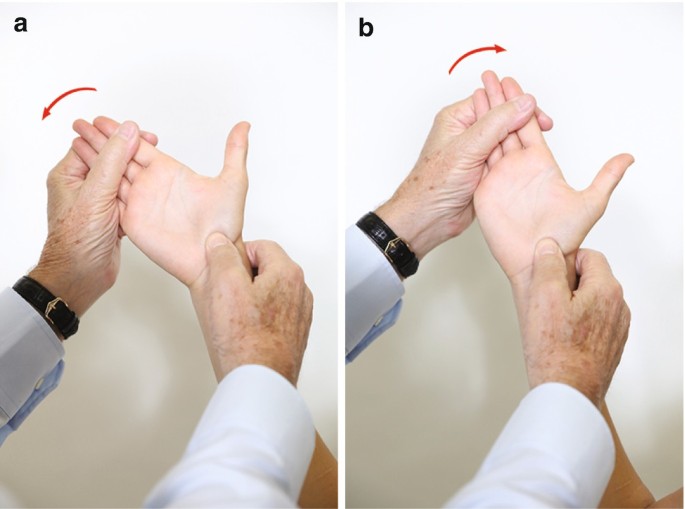
- Keep your arm out straight in front of you while your palm towards down facing position.
- Use your other hand to gently push your wrist towards the little finger side of your forearm until you feel a stretch.
- Hold for 15-30 seconds, then release. Repeat on the other side.
Wrist flexor stretch:
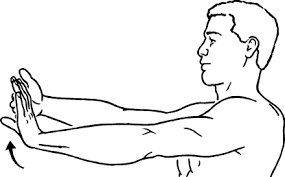
- Hold your arm out straight in front of you with your palm facing up.
- Use your other hand to gently push your wrist towards the back of your hand until you feel a stretch in the FCU muscle.
- Hold for 15-30 seconds, then release. Repeat on the other side.
Grip strengthening exercises:
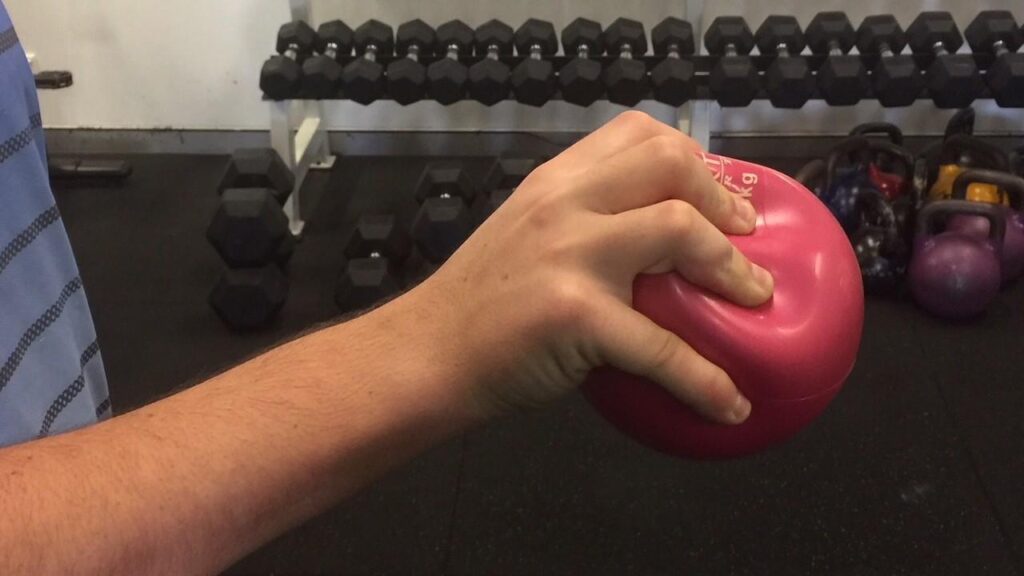
- Grip strengthening exercises such as squeezing a stress ball or a hand grip can help to strengthen the FCU muscle and improve overall grip strength.
It is important to consult with a physiotherapist or healthcare professional before beginning any exercise program, particularly if you have a pre-existing condition or injury. They can provide guidance on appropriate exercises and modifications to ensure safe and effective rehabilitation.
Strengthening exercise
The flexor carpi ulnaris muscle is one of the muscles located on the medial (inner) side of the forearm. It is responsible for flexing the wrist and adducting the hand (bringing it toward the midline of the body). Here are some exercises that can help strengthen the flexor carpi ulnaris muscle:
Wrist curls –
- Sit on a bench or chair and hold a dumbbell with your palm facing up.
- Place your forearm on a table or bench with your hand hanging over the edge.
- Slowly curl your wrist upward, lifting the weight, and then lower it back down.
- Do 3 sets of 12-15 reps.
Reverse wrist curls –
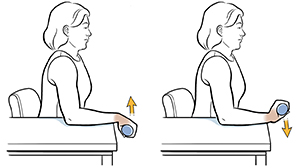
- This exercise is the opposite of wrist curls.
- Hold the dumbbell with your palm facing down, and place your forearm on a bench or table with your hand hanging over the edge.
- Slowly curl your wrist upward, lifting the weight, and then lower it back down.
- Do 3 sets of 12-15 reps.
Hammer curls –
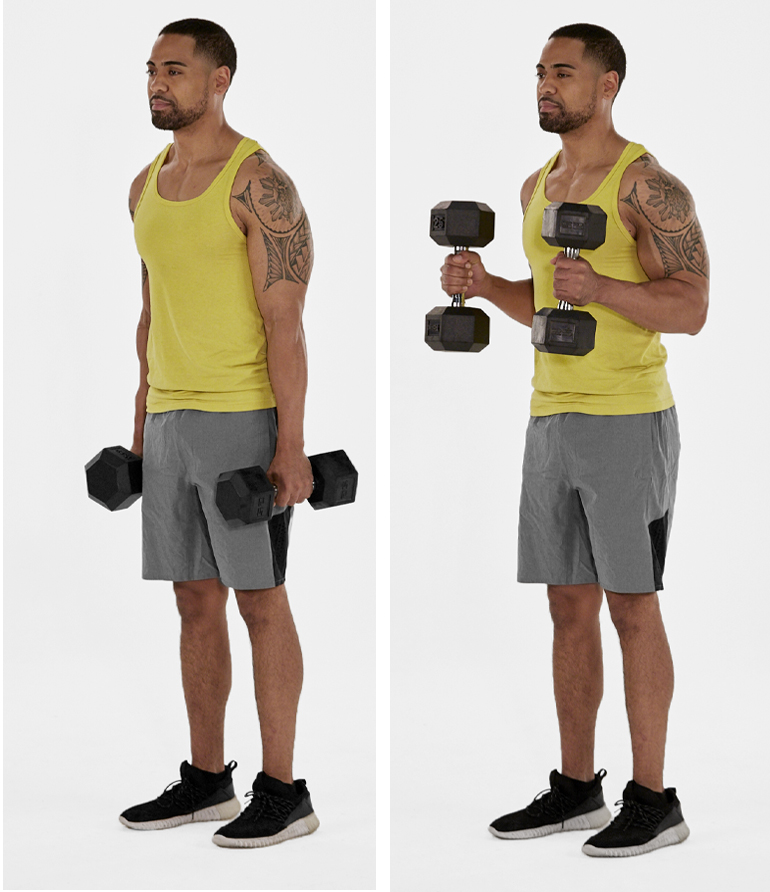
- Hold a dumbbell in each hand with your palms facing inwards (towards your body).
- Curl the weights towards your shoulders, keeping your elbows close to your sides.
- Do 3 sets of 12-15 reps.
Pronation/supination with dumbbell –
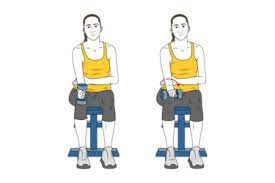
- Hold a dumbbell with your elbow bent at a 90-degree angle and your palm facing down.
- Rotate your forearm so that your palm faces up, then slowly rotate it back down so that your palm faces the ground again.
- Repeat for 3 sets of 12-15 reps.
It’s important to start with a weight that is comfortable for you and gradually increase it as your strength improves. Also, make sure to warm up before exercising and stretch afterward to prevent injury.
FAQ
FCU muscle injuries can be caused by a variety of factors, including overuse or repetitive
strain, direct trauma, poor posture or ergonomics, and underlying medical conditions such as
arthritis or nerve compression.
Symptoms of FCU muscle injury may include pain, stiffness, weakness, swelling, and difficulty
moving the wrist or hand. Numbness or tingling may also be present if nerve compression is
involved.
Recovery time from an FCU muscle injury can vary depending on the severity of the injury, the
underlying cause, and the effectiveness of the chosen treatment approach. Mild injuries may
heal within a few weeks, while more severe injuries may take several months or longer to fully
heal.
Yes, stretching exercises can help improve flexibility and prevent injury in the flexor carpi ulnaris muscle. One common stretch involves extending the arm straight out in front of you with the palm facing down, and then gently pulling the fingers back towards the wrist with the other hand.
Sports and activities that involve repetitive wrist or forearm motions, such as tennis, golf, and baseball, are more likely to cause flexor carpi ulnaris injuries. It is important to take breaks and use proper techniques and equipment to prevent injury.

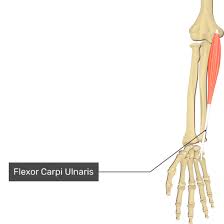
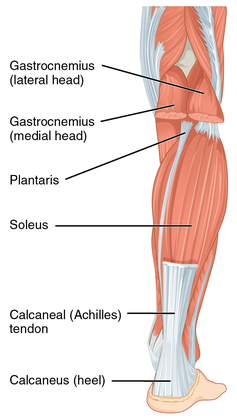
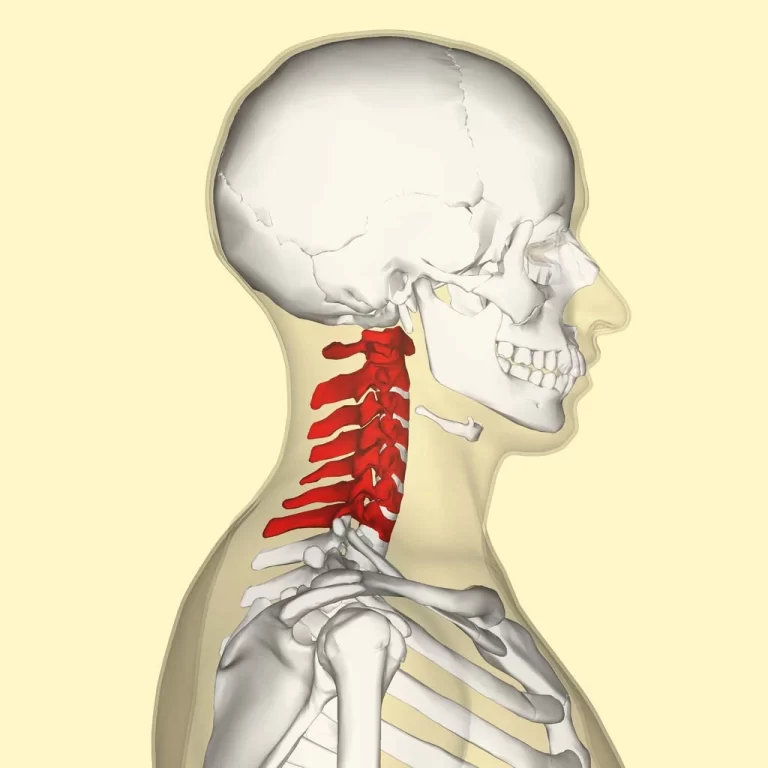
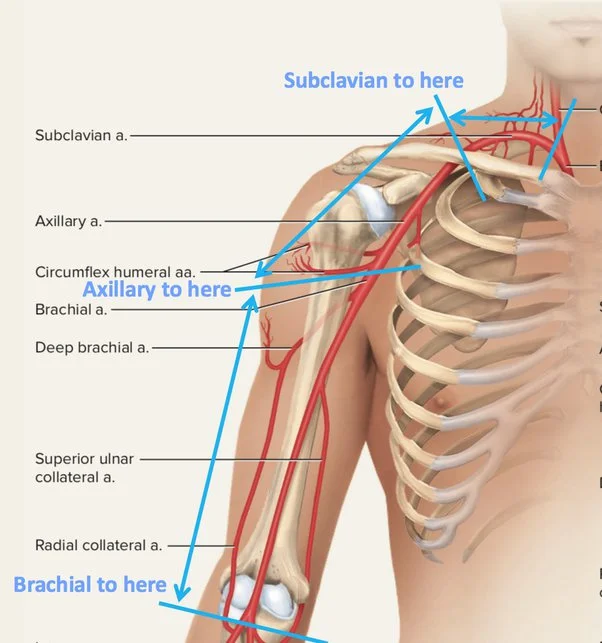
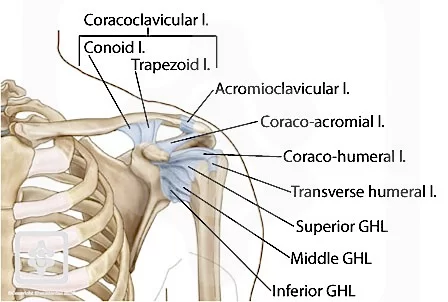
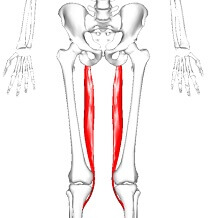
2 Comments